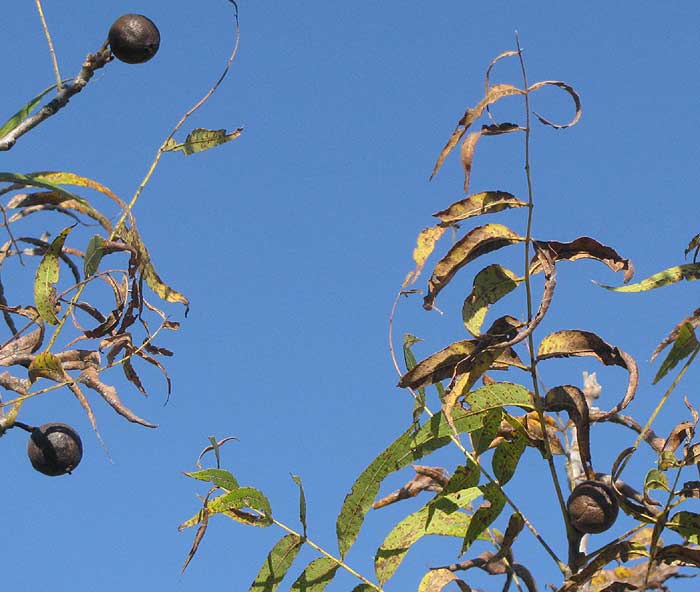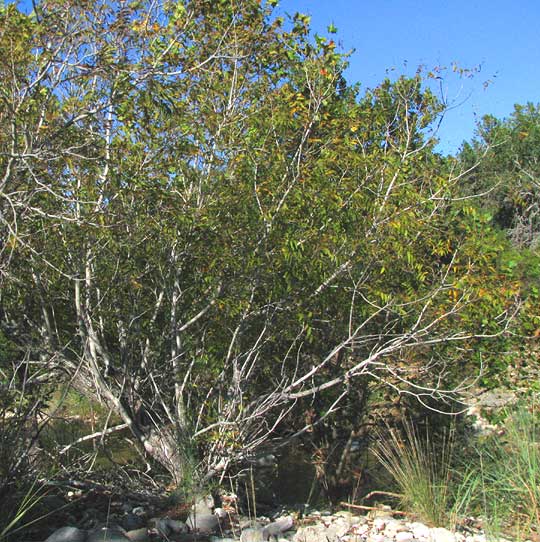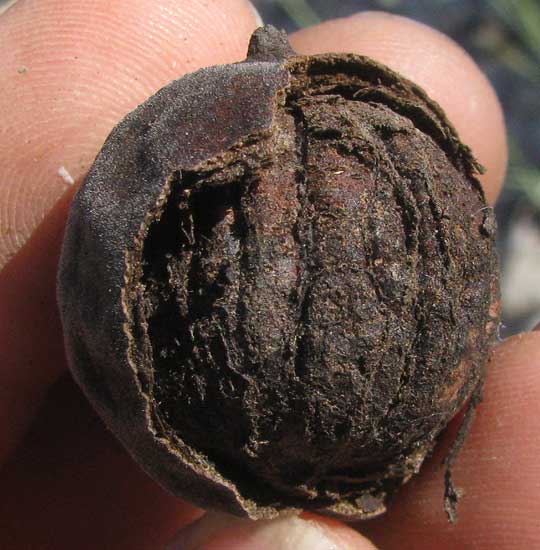Excerpts from Jim Conrad's
Naturalist Newsletter

from the the September 30, 2012 Newsletter issued from the valley of the Dry Frio River in northern Uvalde County, southwestern Texas, on the southern border of the Edwards Plateau; elevation ~1750m (~5750 ft); N29.62°, W99.86°; USA
LITTLE WALNUT
Beside the little Dry Frio River running behind the cabin, at the edge of a low terrace of limestone cobbles deposited by floodwaters long ago, at first I thought a cluster of pale-barked, little trees about 15 feet tall (4.5m) were Pecan trees that had been much battered and splintered by fast-running water, as shown below:

Up close, the pinnately compound leaves with scythe-shaped leaflets brown and shriveling with autumn coming on might have been Pecan leaves, but the small, black, spherical fruits certainly were not Pecan fruits, which are elongated. You can see our tree's leaves and spherical fruits at the top of this page.
Keep in mind that the picture's right side is dominated by just one compound leaf rising vertically, bearing several pairs of slender leaflets. The compound leaf arises from a thick twig entering the picture at the bottom, right. A fruit with its husk partially removed is shown below:

If the husk of this fruit were that of a Pecan or any other hickory fruit (genus Carya,) the husk would show cleavage lines or sutures running at least part of the way from the fruit's tip to its base, but this husk indicates no such line. That means that this is some kind of walnut, genus Juglans. North America's several hickory and walnut species are the only members we have of the Walnut Family, the Juglandaceae, and our fruit is a walnut because the nut's husk doesn't split partially or entirely at maturity. So here was a new walnut species I'd never seen before, and that was exciting!
In the online Flora of North America it was easy to "key out" the species because their fruits are exceptionally small to be a walnut -- only about 7/10ths of an inch across (1.8cm). Our tree is called the Little Walnut, JUGLANS MICROCARPA, the "microcarpa" referring to the small fruits. The species extends from arid northern Mexico up through Texas as far north as southern Kansas, and into New Mexico. Flora of North America says that it occurs along creeks and rivers, exactly as we find it here.
Apparently the profuse sprouting from the trunk from which previous large branches have broken off represents an adaptation to violent flash flooding of creeks and rivers in our arid area. It seems that if you're a tree in such an environment either you can be supple like a willow, or brittle and quick to resprout new branches, like our Little Walnut.